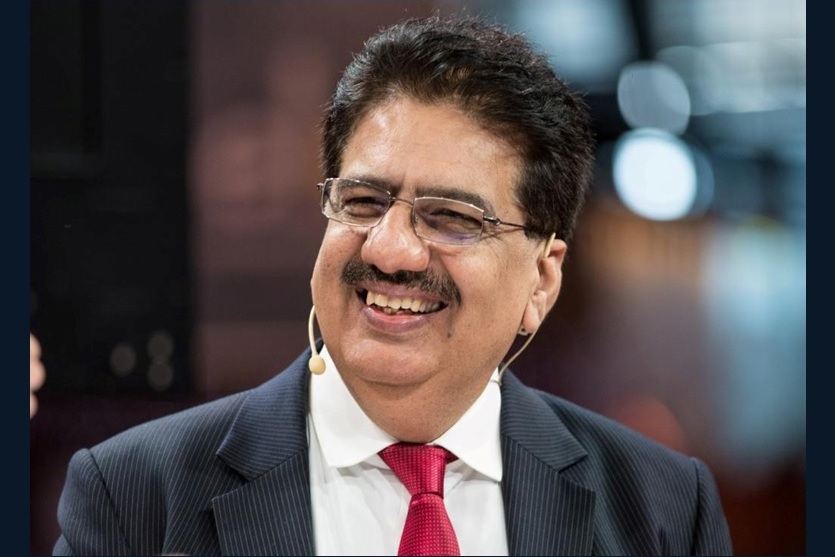As India accelerates its ambition to rank among the world’s top three economies, and as the Sustainable Development Goals (SDGs) shift from global pledges to domestic imperatives, sectors often seen as peripheral demand renewed attention. Tourism and hospitality, in particular, are no longer just about travel—they are critical to job creation, rural development, soft power diplomacy, and environmental stewardship.
In this timely and incisive piece, Jose Ramapuram, Director of Marketing at Evolve Back Resorts, argues that hospitality must be repositioned from the margins of policymaking to the mainstream of development planning. Drawing on his leadership at one of India’s pioneering responsible luxury hospitality brands—renowned for integrating sustainability, heritage conservation, and local community engagement—Ramapuram highlights the untapped potential of this sector.
As India eyes a multi-trillion-dollar economic future, sectors that generate inclusive growth and global goodwill will be indispensable. This article makes a compelling case for why hospitality must be one of them. Read on for a perspective that bridges grassroots impact with national ambition.
Why the Hospitality Sector Needs to Be at the Table of India’s Development Goals
India’s growth story over the past decade has been truly remarkable as it aims to break into the top 3 economies of the world in the near future. While industries such as infrastructure, technology, manufacturing and agriculture are making great strides, an overlooked industry that still has great potential is tourism and hospitality. India aims to evolve into a $1 trillion tourism economy by 2047, which is surely going to be a key industry driver as it directly contributes to job creation, enhancement of infra projects, higher demand for local cuisine and more. Hospitality in India requires a long-term strategy to foster India's growth as a global soft power.
As of 2023, the tourism sector was valued at $231 billion and is expected to rise to $523 billion by 2034. That would make it the second largest contributor to tourism GDP in the APAC region. With a healthy anticipated CAGR of 10-12% until 2025, India looks set to achieve this goal well in time. The main contributing factors to this rise are due to surges in domestic travel, better travel infrastructure and increased disposable incomes of the common people.
Tourism and hospitality contribute hugely to direct and indirect job opportunities for the youth in India. Be it hotel staff, transport providers, tour operators or local food production, the influx of tourists is significant in driving workforce development. Agriculture, wellness, handicrafts also benefit due to India’s rich and diverse cultural heritage. The best part of India’s tourism is that tier-2 and tier-3 cities become huge crowd pullers as well. Gone are the days of foreigners flocking to just metro cities in India. Cities such as Indore, Vizag, Coimbatore, Jaipur, Mangalore have become strong candidates for hospitality - hosting corporate meets, sports events, concert shows and much more. This further nurtures local entrepreneurship and relieves the traffic from higher tiered towns.
The millions of opportunities in India's unrepresented places requires further investment for the future. We see an uptick in constructions of hotels, resorts and convention centres in many such cities which will undeniably lead to developments of roads, airports and digital connectivity, benefitting the local population directly. The Indian government has inculcated tourism infrastructure programmes and e-VIsa systems to promote tourism to the more diverse regions of India such as the North East to showcase what it can contribute globally in terms of diversity and inclusion with a rich array of options. Stimulating the underserved tribal areas, heritage towns, temple tourist spots and ecologically sensitive locations has made India the most unique travel destination like no other.
Aligning with SDG goals
Along with hospitality and tourism, the focus is also to align closely with global Sustainable Development Goals (SDGs). India’s objectives for sustainability and conservation of cultural heritage focus on water efficiency, energy conservation, waste management and going greener with its practices. The three major sustainable goals are SDG 8 (Decent Work and Economic Growth), SDG 12 (Responsible Consumption and Production) and SDG 14 (Life Below Water).
India aims to align with SDG 8 by creating more jobs, supporting local entrepreneurship and stimulating urban, rural and tribal economies alike. Ensuring sustainable tourism with efficient use of resources, reducing waste and encouraging eco-friendly travel and accommodation, India comes close to aligning with SDG 12. Further, India’s coastal and island tourism incorporates conservation and protection of marine ecosystems to align with the SDG 14 of Life Below Water.
Additionally, India aims to align with SDG 10 (Reduce Inequality Within and Among Countries), SḌG 11 (Make Cities and Human Settlements Inclusive, Safe, Resilient, and Sustainable) and SDG 13 (Take Urgent Action to Combat Climate Change and Its Impacts) to ensure that tourism brings forth natural and local development but in a manner that is both sustainable and impactful for nature.
India is poised to become the tourism capital of the world and the reasons are manifold. India has several natural attractions not limited to mountain terrains, snowy peaks, picturesque islands and sandy beaches. It is also home to over 100,000 temples, churches, monasteries and many more heritage sites. Hospitality is impossible without its intangible cultural heritage, traditional arts, ancient architecture and diverse local cuisines. Every unique Indian village is an experience in itself with different languages, food and culture. India’s vast expanse and multicultural people offer a rich and fulfilling experience to any traveller unlike no other. No wonder India sets its sights on becoming the largest cultural power at the international stage.
Need of the hour
What remains to be improved in this sector is the right backing and policy initiatives that are required. India’s cities and towns require proper and regular upkeep and further innovation. Connectivity to the last mile is also another factor that needs attention. The state and central governments have their task cut out in ensuring easier policies for maintenance and accountability in the tourism sector to remain competitive at the global stage. More public-private partnerships are the need of the hour with better incentives to boost tourism-related infrastructure projects operating in full steam.
Reaching the ambitious goal of becoming a $1 trillion tourism economy by 2047 requires a comprehensive and watertight strategy that is continued despite changes in power or leadership. Hospitality is more than just a facilitator for tourism, in fact it behaves as a great catalyst for employment, infrastructure, sustainability and global engagement. India’s growth can be ten folds with a robust tourism industry - as it creates more than just jobs and development, it puts India on the global map for future foreign investment. Attaining fully inclusive and future-ready growth is possible through policy frameworks that are aligned with global SDGs and keeping local economies in mind. The story of ‘Incredible India’ has only just started and now is the right time for India to become an esteemed and prosperous tourist hub of the world.


















.jpg)




